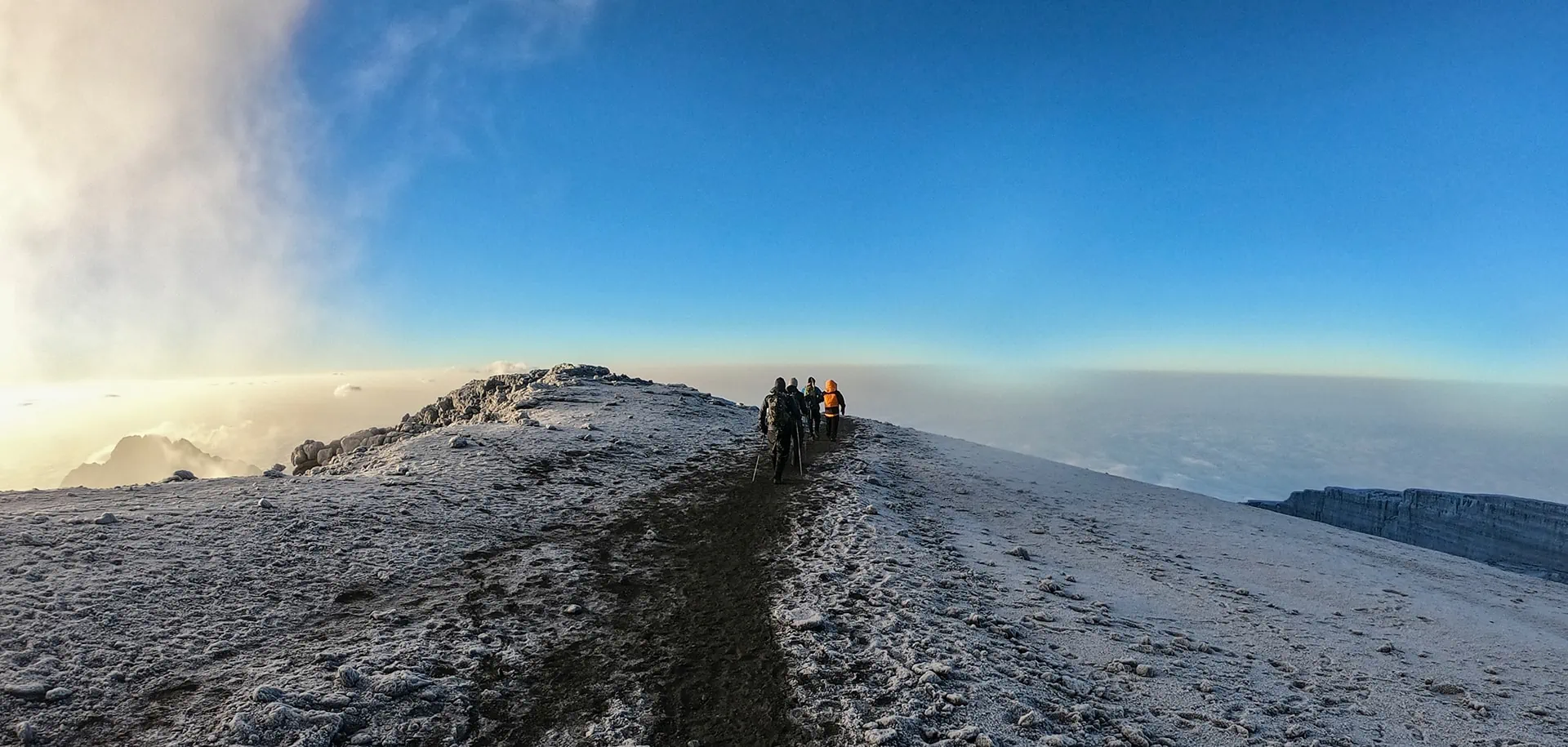As you embark on your Kilimanjaro climb with DKE, it’s important to understand the process of acclimatization to the high altitude. At high elevations, the amount of oxygen in the air is significantly lower, which can lead to mountain sickness.
Acclimatization is the process of allowing your body to adjust to these conditions and includes adapting to the reduced oxygen supply at high altitudes, which can help prevent altitude sickness. According to the International Society for Mountain Medicine (ISMM), the best way to acclimatize is to “walk high, sleep low,” meaning that you should climb to higher altitudes during the day and then descend to sleep at a lower altitude. This allows your body to gradually adjust to the thinner air and can help reduce the risk of altitude-related illnesses.
During the climb, your body will produce extra red blood cells to compensate for the lower oxygen levels. This process may take several days, so it’s important to take things slow and allow your body to acclimate. Mountain sickness is caused by a lack of oxygen in the body, and symptoms can range from mild to life-threatening. Symptoms of mountain sickness can include headache, nausea, and shortness of breath. While these symptoms are common, it’s important to take them seriously, as they can lead to more serious conditions like pulmonary or cerebral oedema.
If you experience severe symptoms such as difficulty breathing or confusion, please alert one of our guides and seek medical attention immediately

To prevent altitude sickness, it’s important to take sensible precautions:
The good news is our experienced guides will help you to acclimatize safely and effectively during your climb. We follow the planned itinerary carefully, including gradual ascents and rest days to allow the proper acclimatization. Our team is also trained to recognize the signs and symptoms of altitude sickness and provide appropriate advice and care if needed.
By following these guidelines and taking things slowly, you’ll increase your chances of a safe and successful climb to the summit of Kilimanjaro.
